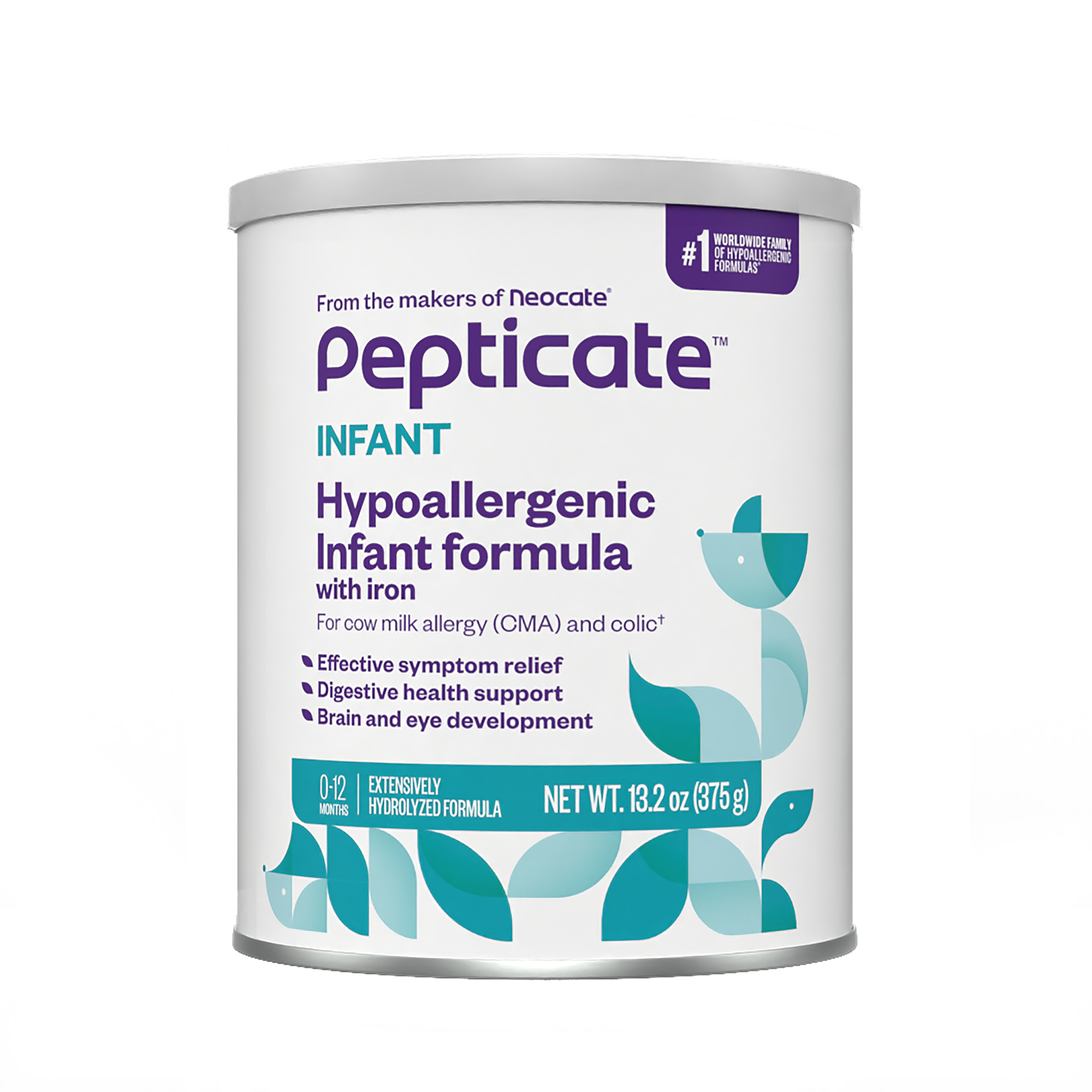 Starting your baby on a new infant formula can raise many questions. Our goal is to address these questions and help you prepare for what to expect when starting Nutricia’s Pepticate Infant formula. Remember, your healthcare team knows your baby best, so always follow their guidance.
Starting your baby on a new infant formula can raise many questions. Our goal is to address these questions and help you prepare for what to expect when starting Nutricia’s Pepticate Infant formula. Remember, your healthcare team knows your baby best, so always follow their guidance.
Keep reading as we answer some of the most common questions parents have when starting their babies on Pepticate.
When Will I See a Difference in My Baby’s Symptoms? A Timeline for Symptom Relief
Symptom improvement with a hypoallergenic, extensively hydrolyzed formula (eHF), like Pepticate, may begin within a few days. However, every baby is different, and it may take more time for some to adjust before seeing improvement. Doctors and medical guidelines generally recommend waiting about two weeks to see if the formula works well for your baby. This adjustment period is expected when starting any new formula. If you are unsure about any changes, consult your baby’s healthcare team.
Understanding How GOS/FOS Affects Your Baby’s Diaper
Changes in your baby’s bowel habits are common when switching to a new infant formula. While every baby is different, Pepticate contains ingredients that may affect your baby’s stool.
Among the key Pepticate ingredients are added prebiotic fibers called FOS and GOS, which are designed to mimic the prebiotic components found in breast milk. FOS stands for fructooligosaccharides and GOS stands for galacto-oligosaccharides. These ingredients play a role in supporting infant digestive health. FOS and GOS may increase stool frequency and stool softness compared to other hypoallergenic formulas without prebiotic fibers. It may take a little bit of time after starting Pepticate to determine what is “normal” for your little one. Talk to your doctor if you have any questions.
Gassy Beginnings – What’s normal? What’s not?
When changing formulas, you may notice changes in your baby’s gas. Increased gas is common in the first few days or weeks. Hypoallergenic formulas like Pepticate are digested and absorbed differently, which may cause some initial gassiness or even a change in the smell of gas. When adding prebiotics, like those in Pepticate, to the diet, it can take a little bit of time for the body to adjust. If you want to know more about what can happen to your baby’s poop, we have an entire blog post dedicated to that!
Taste and Smells that Win – Why Parents Approve
Pepticate is the #1 best-tasting hypoallergenic extensive hydrolyzed formula (eHF) rated by parents*. Pepticate ingredients are inspired by breast milk components, such as lactose and whey protein, which both help with Pepticate’s great taste. Not only does lactose help Pepticate taste good, but lactose can also help to increase the absorption of calcium. The whey protein has been extensively hydrolyzed, so the protein has been broken into very small pieces so that it will be well tolerated by most infants with cow milk protein allergy.
Take a look at this parent guide on how to successfully transition your baby to Pepticate to see why Pepticate is the #1 best tasting hypoallergenic eHF rated by parents*.
We hope these answers help you when starting Pepticate. If you have questions about using Pepticate, please contact our Medical Services team at: 1-800-365-7354 (option 3) Mon-Fri, 8:30am-5:00pm, ET or at nutritionservices@nutricia.com.
Authored by: Alexa Klein, MS RDN, Medical Affairs Associate. June 2025.
Alexa has been a dietitian for 8 years and has worked for the Medical Services team at Nutricia for the past 3 years. She has spoken to hundreds of Pepticate caregivers. She is an expert in the science behind Pepticate and food allergies. She can relate to families using Pepticate because her daughter used the product when she was an infant.
*Based on March 2024 nationwide taste test among parents of powdered eHFs








